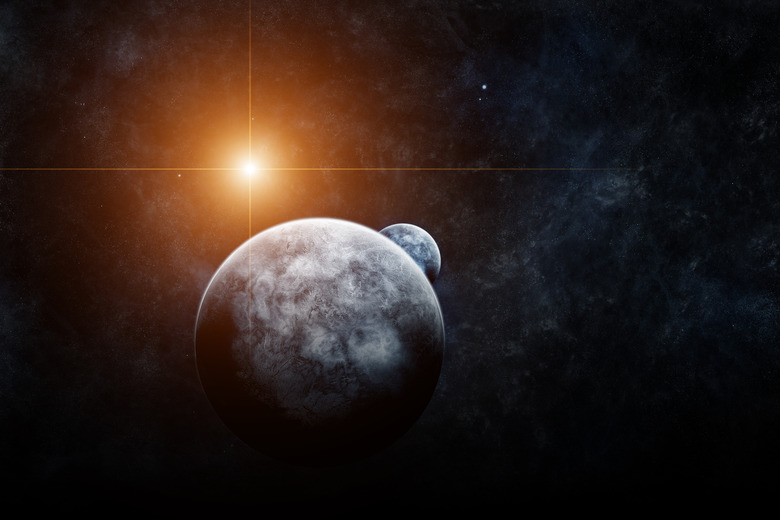The Moon's Effect On The Seasons
From one night to the next the appearance of the moon varies. It's tempting to connect the changes in the moon with changes on Earth. That's one reason why so many cultures have seasonal names associated with the moon: "the harvest moon," "the frost moon" and "the flower moon," for example. But tempting as it is, it's incorrect to connect the moon with seasonal variations. Whatever influence the moon has on Earth's seasons is not only minimal, but on timescales of thousands of years. Annual seasonal variations on Earth are solely due to the Earth's orbit and the tilt of its axis.
The Earth's Orbit
The Earth's Orbit
The Earth orbits the sun along an almost circular path. At the same time, the Earth spins around its axis once every day. It takes about 365 and a quarter days for the Earth to complete a circuit — and that's the definition of a year. The plane in which the Earth orbits is called the ecliptic. The axis around which the Earth rotates is not perpendicular to the ecliptic. That is, the Earth's axis of rotation is tilted with respect to the direction it moves. That means that at some times of year — some places on the Earth's orbit — the sun is aimed more directly at the northern hemisphere and sometimes aimed more directly at the southern hemisphere. When your part of the Earth is tilted toward the sun, it's spring and summer, and when your hemisphere is tilted away from the sun it is autumn and winter. That's the cause of the seasons.
The Moon's Phases
The Moon's Phases
All the while the Earth is rotating and orbiting, the moon is doing the same thing. The moon orbits the Earth once every 29 and a half days — that's the time from one full moon to the next. The 29 and a half does not fit evenly into 365 and a quarter. That means that full moons do not always occur on the same dates from year to year. You can look at a lunar calendar to see the variations in the dates of the full and new moons. Over the course of your life, the dates of the full moon have shifted by weeks, and the seasons have not changed.
Seasonal Moons
Seasonal Moons
Just because the moon doesn't affect the seasons doesn't mean the phases of the moon have no effects. Full moons mean something to people, so much so that full moons get special names — names connected to the seasons. Among the names for seasonal moons in both Native American and English traditions you can find those named the Pink Moon, the Egg Moon; the Flower Moon, the Milk Moon, the Sturgeon Moon, the Grain Moon, the Hunter's Moon, the Harvest Moon, the Beaver Moon and the Frost Moon. Those names are connected to seasonal activities, but they do nothing to change the flow of the seasons. The Harvest Moon, for example, is the full moon closest to the autumnal equinox — the beginning of fall. Traditionally, farmers used the light of the Harvest Moon to extend their reaping hours — but that has no connection to the actual beginning of fall, which can come before or after the Harvest Moon.
The Moon's Influence
The Moon's Influence
The Earth's axis is tilted at 23.5 degrees from the ecliptic. That angle is responsible for the seasons. But the tilt angle is not fixed. The moon's gravitational pull on the Earth causes precession — a small, 21,000-year cyclic change in the angle of the Earth's tilt. Without the moon's pull, precession would be even slower, but it would be larger. Larger precession means a greater change in the tilt of the Earth's axis, which means that the nature of the seasons would change. Not much to worry about, though, because those changes would take billions of years — that is, if Earth didn't have a moon.
References
Cite This Article
MLA
Gaughan, Richard. "The Moon's Effect On The Seasons" sciencing.com, https://www.sciencing.com/moons-effect-seasons-22257/. 23 April 2018.
APA
Gaughan, Richard. (2018, April 23). The Moon's Effect On The Seasons. sciencing.com. Retrieved from https://www.sciencing.com/moons-effect-seasons-22257/
Chicago
Gaughan, Richard. The Moon's Effect On The Seasons last modified March 24, 2022. https://www.sciencing.com/moons-effect-seasons-22257/
